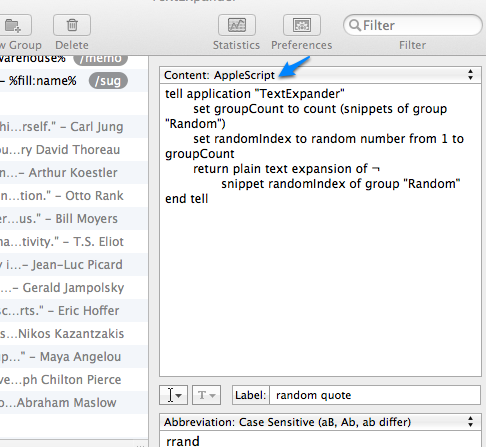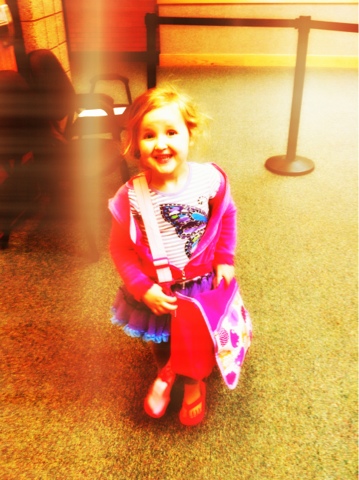Go with your gut when hiring. Never place blame on your superiors
Since we are a Title I school in school improvement, we have a consultant who helps us. He is about 75, and was a principal for about 750 years. At the beginning of the year, he spent a lot of time talking with me and my principal about what our school was like, what our philosophies are about education, and our goals for the school. He is an extremely nice man, and very helpful.
He gave us two pieces of advice, in particular, that are really great, and have stood out to me since he said them, so I figure I should probably write them down somewhere.
- When you hire someone, go with your gut, because it is always right. If you feel like you shouldn’t hire someone, listen to that, because they will likely cause you nothing but drama.
- Never place blame on the “district” or a superior. If you can’t justify why you are doing something on your own, you shouldn’t do it.
These two pieces of information are really quite simple, but there is a lot of power behind them.
There were two people that I have been involved with in hiring in my career that really illustrate this point well (I wasn’t the one making the decision, so my feelings on this are pretty much worthless, except as it relates to this lesson from our consultant). One, I felt like we shouldn’t hire, and the other I felt like we really should, notwithstanding some warning signs. The one I didn’t feel good about, turned out to have a lot of drama in her life, and that was really sad. The one I did feel good about, turned out to be a really great employee. Since these two experiences happened to me, the advice from our consultant immediately clicked and made sense in my mind.
Follow your heart. It is usually pretty good advice.
The other one, placing blame, relates to enforcing policies and procedures with teachers. The way this makes the most sense to me is to relate it to teachers and their students. We tell teachers all the time that when they send a student to someone else to deal with the problem, they lose a lot of credibility in that student’s eyes. They lose power and authority. What is worse, when a student goes to the administrator because the teacher is at her wit’s end, the administrator cannot possibly feel the frustration that the teacher feels, and so the conversation with the principal and student is a lot less powerful than the talk would be with the teacher. The principal can’t feel the frustration, and the student doesn’t actually work out the problem he has with the teacher, so it perpetuates.
When I was doing my internship, a teacher brought a whole classroom full of students to the vice principal’s office and told them that they were not leaving until the student who had taken a pencil from another student confessed. The poor teacher was frustrated, ragged, and annoyed with her students. Truthfully, she didn’t know what else to do. She was lost and furious that there was drama over a silly little pencil, and yet, she felt this was the best way to get the kids back on task so she could teach them again. She was doing the only thing she could think of doing. The problem is that while she was so upset, the vice principal didn’t care about a pencil when he was in the middle of dealing with a drug deal that was happening at the school. He did his best to support the teacher, but he also needed to get the kids back to class and back to learning. The kids in that moment thought that their teacher didn’t know how to deal with someone stealing something, and they weren’t afraid to see the vice principal because they knew there was really nothing he could do to them. He ended up telling them to go back to class and if the pencil wasn’t where it should be by lunch time, he would sit with them during lunch in their classroom, instead of being able to go to cafeteria and then outside. Not an ideal situation to be sure, but he was very limited in his possible actions. (And, in reality, had the pencil not miraculously shown up, I would have been the one sitting with them.)
If we, as administrators do the same thing, by pointing to our superiors and saying, “Well, this comes from the district, and I can’t go against it,” we lose power. Whether or not the district really has that rule, we are showing that we don’t make the decisions, we just do what we are told. In our American culture, “Yes Men (and Women)” are looked down upon.
To be clear, our consultant wasn’t talking about times when the district actually does require us to do certain things. He was talking about things that we choose to enforce as administrators that are not actually from the district. For example, if a kid brings a weapon to school and threatens another person, it is an immediate suspension. As good as that kid may be, or as much as I may think he is swell, my hands are tied in that instance.
On the other hand, let’s say it is not a requirement in the district for someone to prepare lesson plans and submit them once a week to the principal. If I say, “The district wants me to collect your lesson plans and I need you to turn them in to me every Friday,” I lose credibility. I need to have the courage to tell my teachers that I am the one requiring it of them. If they are going to revolt and get upset, I need to either be ready for that, or I need to do a ton of front loading to get them to understand
why we need what I am asking of them.
And surely, if I am going to do something that the district is not going to support, it is not really worth it for me to say the district is requiring it, because they may not like the idea at all. If the teachers do get upset and go over my head, they are certainly going to learn that the district isn’t really making me do it, and that is going to just take me away from where I want to be.




















 Facebook/Jethro
Facebook/Jethro Linkedin/Jethro Jones
Linkedin/Jethro Jones Twitter/jethrojones
Twitter/jethrojones YouTube/mrjoneseng
YouTube/mrjoneseng Del.icio.us/jethrojones
Del.icio.us/jethrojones Wikipedia/mrjoneseng
Wikipedia/mrjoneseng GMail/Jethro
GMail/Jethro